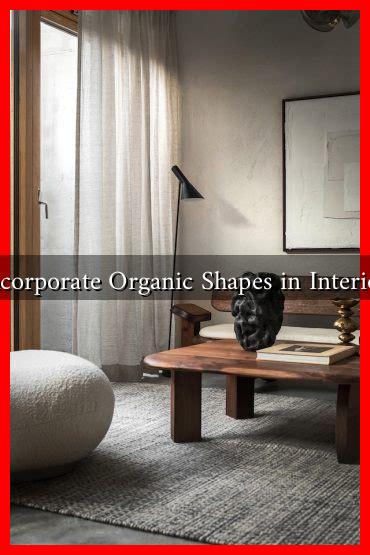-
Table of Contents
How to Incorporate Organic Shapes in Interior Design
In recent years, the trend of incorporating organic shapes into interior design has gained significant traction. This design philosophy emphasizes natural forms, fluid lines, and a connection to the environment, creating spaces that feel harmonious and inviting. In this article, we will explore how to effectively integrate organic shapes into your interior design, providing practical tips, examples, and insights.
Understanding Organic Shapes
Organic shapes are forms that are inspired by nature, often characterized by their irregularity and fluidity. Unlike geometric shapes, which are defined by straight lines and angles, organic shapes evoke a sense of movement and softness. They can be found in various elements of design, including furniture, decor, and architectural features.
Benefits of Using Organic Shapes
Incorporating organic shapes into interior design offers several advantages:
- Enhanced Aesthetics: Organic shapes create visually appealing spaces that feel more relaxed and inviting.
- Improved Flow: Curved lines can help guide the eye through a room, promoting a sense of movement and continuity.
- Connection to Nature: Organic shapes foster a connection to the natural world, which can enhance well-being and reduce stress.
- Versatility: These shapes can be integrated into various design styles, from modern to bohemian, making them adaptable to different tastes.
Ways to Incorporate Organic Shapes
Here are some effective strategies for incorporating organic shapes into your interior design:
1. Furniture Selection
Choose furniture pieces that feature organic shapes. Look for items with rounded edges, curved backs, or asymmetrical designs. For example:
- Curved Sofas: A sectional sofa with soft curves can serve as a focal point in a living room.
- Organic Coffee Tables: Tables made from natural materials like wood or stone often have irregular shapes that add character.
- Accent Chairs: Chairs with flowing lines can create a cozy nook that invites relaxation.
2. Wall Art and Decor
Incorporate organic shapes through wall art and decor. Consider the following options:
- Abstract Paintings: Choose artwork that features flowing lines and natural forms.
- Sculptural Pieces: Add three-dimensional art that mimics organic shapes, such as wall-mounted sculptures or hanging mobiles.
- Textiles: Use fabrics with organic patterns, such as floral or wave designs, for cushions and curtains.
3. Architectural Elements
Consider integrating organic shapes into architectural features. This can include:
- Curved Walls: Instead of traditional straight walls, opt for curved partitions that create a sense of flow.
- Arched Doorways: Arches can soften the transition between spaces and add an elegant touch.
- Organic Lighting Fixtures: Choose light fixtures with flowing designs that mimic natural forms, such as pendant lights shaped like leaves or flowers.
4. Landscaping and Indoor Plants
Bringing the outdoors in is a powerful way to incorporate organic shapes. Consider these ideas:
- Indoor Plants: Use plants with soft, rounded leaves to add life and organic shapes to your space.
- Natural Materials: Incorporate stone, wood, and other natural materials in your decor to enhance the organic feel.
- Water Features: If space allows, consider adding a small indoor fountain or water feature that mimics natural forms.
Case Studies and Examples
Several designers and brands have successfully embraced organic shapes in their work. For instance, the renowned Danish design brand Muuto offers furniture that features soft curves and natural materials, creating a warm and inviting atmosphere. Similarly, the architecture firm Bjarke Ingels Group (BIG) has designed buildings with flowing forms that blend seamlessly into their natural surroundings.
Conclusion
Incorporating organic shapes into interior design can transform a space, making it feel more inviting and connected to nature. By selecting furniture with soft lines, using art and decor that reflect natural forms, and considering architectural elements that promote flow, you can create a harmonious environment that enhances well-being. As you embark on your design journey, remember that the key is to embrace the beauty of imperfection and the fluidity of nature. For more inspiration on organic design, check out resources like Architectural Digest.


